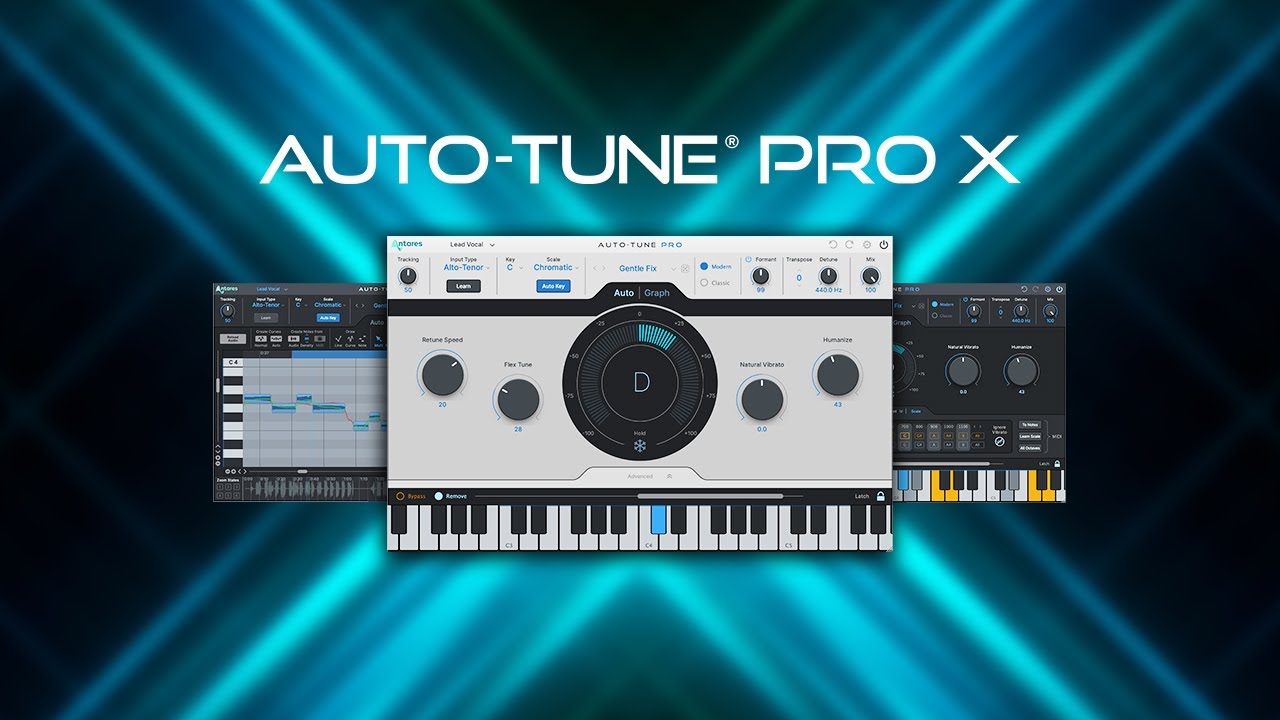Essential Auto-Tune Techniques for Mixing and Mastering Engineers in 2025
In the fast-evolving world of modern music production, achieving pitch-perfect vocals isn’t just a preference—it’s a necessity. Whether you’re working with pop stars or indie artists, Auto-Tune remains one of the most powerful tools for vocal polishing and creative sound design. For mixing and mastering engineers, understanding essential Auto-Tune techniques means the difference between an amateur-sounding track and a chart-ready hit.
At My Glass Studios, we use advanced tuning strategies to help artists find their voice—both sonically and creatively. In this comprehensive guide, we’ll explore how you can master the art of Auto-Tune for mixing and mastering in 2025.
What Is Auto-Tune and Why It’s Essential in 2025
Auto-Tune, originally created by Antares, is a pitch correction software that adjusts the pitch of vocals or instruments in real-time or post-production. Its use has expanded from subtle pitch correction to a defining stylistic effect in hip-hop, pop, trap, and electronic music.
The Evolution of Auto-Tune in Professional Studios
- 1997: Auto-Tune launched and changed the music industry.
- 2000s: T-Pain and Kanye West popularized its creative vocal use.
- 2010s–2025: Auto-Tune is now used as both a tool for transparency and a style signature.
In today’s world of hyper-polished streaming music, mixing and mastering engineers must not only know how to use Auto-Tune, but how to shape it creatively to elevate a track’s emotional and commercial impact.
The Role of Mixing and Mastering Engineers in Auto-Tune Application
The producer may suggest the use of Auto-Tune, but it’s often the mixing and mastering engineer who decides how it’s implemented. Their expertise in shaping tone, dynamics, and pitch correction determines how the final vocal sits in the mix.
Why Engineers Must Master Auto-Tune Tools
- Correct pitch without losing vocal emotion.
- Create signature vocal effects for unique artist identity.
- Control tuning transparency based on genre expectations.
- Ensure the vocal blends well with instrumental elements.
At My Glass Studios, we educate and train engineers to understand when to apply Auto-Tune aggressively, and when to keep it virtually invisible for natural-sounding performances.
Essential Auto-Tune Techniques Every Engineer Should Know
Understanding the core functionalities and creative workflows of Auto-Tune is key for any engineer striving to produce world-class vocals.
1. Choose the Correct Key and Scale
Auto-Tune operates by snapping vocals to the chosen key and scale. Without setting this correctly, tuning can sound robotic, unnatural, or simply wrong.
- Use a key detection plugin like Mixed In Key or Auto-Key.
- Confirm key and mode with the producer or songwriter.
- Use chromatic mode only when necessary for creative dissonance.
2. Control Retune Speed for Style or Subtlety
The retune speed determines how quickly the pitch correction kicks in.
- Fast retune speeds (0–10 ms): Classic “T-Pain effect,” used in hip-hop and trap.
- Medium speeds (10–40 ms): Smooth correction for modern pop vocals.
- Slow speeds (40+ ms): Natural pitch correction for acoustic or indie tracks.
3. Humanize to Preserve Natural Vibrato
The Humanize control keeps Auto-Tune from affecting sustained notes too aggressively, preserving vibrato and vocal expression.
- Low Humanize: Robotic effect, good for EDM or experimental.
- High Humanize: Ideal for ballads and organic performances.
4. Formant Shifting for Creative Tone Design
Auto-Tune Pro and other versions allow formant control, which changes the vocal’s perceived tone without altering pitch.
- Raise formants for a youthful, brighter tone.
- Lower formants for a deeper, more masculine quality.
Use sparingly in mixing stages and more aggressively in mastering when processing stems.
5. Graph Mode for Precision Tuning
For advanced mastering engineers, Graph Mode allows you to manually move pitch curves for ultimate control.
- Zoom in to fix specific syllables or vibrato inconsistencies.
- Perfect for genre-specific pitch expectations like R&B or gospel.
My Glass Studios specializes in this level of precision editing during final mixes and pre-masters.
Genre-Specific Auto-Tune Approaches
Each genre has unique vocal expectations. Knowing how to tailor Auto-Tune for the musical context is critical for both mixing and mastering engineers.
Pop and Dance Music
- Tight pitch control and fast retune speeds.
- Subtle vibrato preservation.
- Slight formant adjustment for sparkle.
Hip-Hop and Trap
- Heavily tuned vocals as a stylistic choice.
- Retune speeds between 0 and 20 ms.
- Use of Auto-Tune as an instrument in vocal layering.
Indie and Singer-Songwriter
- Natural pitch correction with slow retune.
- High Humanize and minimal formant adjustment.
- Graph mode tuning recommended for emotional clarity.
Creative Auto-Tune Techniques for Signature Sound Design
Beyond correction, Auto-Tune can be an expressive tool in your sonic palette.
Layered Harmonies Using Multiple Auto-Tune Instances
- Duplicate vocal takes.
- Apply different retune speeds or scales.
- Blend for rich harmonies with synthetic flair.
Pitch Glides and Manual Correction for FX Vocals
- Use Graph Mode to create exaggerated pitch slides.
- Automate formants and pitch to simulate robotic transitions or artificial melodies.
This is especially popular in genres like hyperpop, lo-fi trap, and digital R&B—genres we frequently mix at My Glass Studios.
Auto-Tune in the Mastering Process: What You Need to Know
Typically, pitch correction is done before mastering. However, in stem mastering or corrective post-mixing, some Auto-Tune adjustments may still be necessary.
Guidelines for Mastering Engineers Using Auto-Tune
- Only apply to stems, not final stereo mixes.
- Prioritize tonal consistency over aggressive pitch control.
- Ensure tuning doesn’t clash with stereo imaging or limiting.
Mastering engineers at My Glass Studios apply Auto-Tune when necessary using a high-resolution, transparent approach to retain vocal integrity.
Tools That Pair Perfectly with Auto-Tune
Auto-Tune works best when supported by other vocal processing tools.
Recommended Pairings
- EQ: Use surgical EQ to clean up sibilance or low-end mud before tuning.
- De-esser: Prevent exaggerated sibilance post-Auto-Tune.
- Compressor: Controls vocal dynamics to aid tuning consistency.
- Saturation: Adds analog warmth after digital pitch correction.
Real-World Auto-Tune Workflow: From Mix to Master
Step-by-Step Auto-Tune Workflow
- Pitch Detection: Determine the key and scale.
- Initial Tuning: Apply real-time Auto-Tune with proper retune speed and Humanize.
- Editing: Use Graph Mode if needed for corrections.
- Post-Processing: EQ, compress, and polish.
- Final Review: A/B test with and without tuning to ensure emotional accuracy.
Engineers at My Glass Studios follow this approach religiously to deliver platinum-quality vocal masters.
Mistakes to Avoid When Using Auto-Tune
Common Pitfalls
- Ignoring the correct key and scale.
- Overusing fast retune speeds in inappropriate genres.
- Not adjusting formants when needed.
- Applying Auto-Tune too late in the signal chain.
Avoid these mistakes to maintain vocal clarity and musical intent.
Final Thought: Auto-Tune as a Tool of Precision, Not a Crutch
In 2025, Auto-Tune is no longer just a correction tool—it’s a creative asset. When used with intention, it can sculpt iconic vocal tones, rescue imperfect takes, and elevate any track into professional territory. For mixing and mastering engineers, knowing how to wield Auto-Tune with finesse is a mark of true expertise.
At My Glass Studios, we view Auto-Tune not as a shortcut, but as an instrument of precision and artistry. Whether you’re working on underground trap or Grammy-level pop, mastering Auto-Tune means mastering the modern voice.

